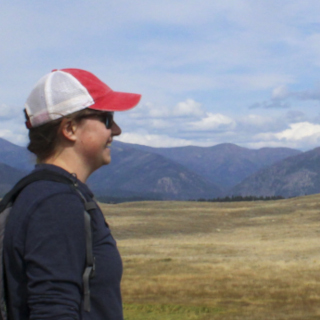Simulation Output
Following a simulation, the results can be viewed in the user interface. If examination of the results is satisfactory, a variety of output files can be created using Export, Reports, or Interpretation from the main menu. If no reports are desired, another simulation can be started by going back to Run Simulation in the main window. The system resets to original conditions. Running another simulation results in different output as long as the simulation method is stochastic. To continue a simulation, select Utilities > Make Area Simulation Ready. This copies the resulting state to the starting state for the next simulation. The last time step disturbance process is also saved for each vegetation unit so the landscape is starting with a history of a single time step.
Output from the system is in a variety of forms. Output can be viewed within the user interface, reports, interpretations, and export files that can be joined back to the vegetation units within the GIS environment. Additionally, there are two Excel macros that help summarize modeled results. These outputs vary depending on whether a single simulation or multiple simulations are made. The distinction between reports versus interpretations is in the amount of processing of plant community attributes needed. For individual simulations, no output files are automatically generated. This enables the user to make many simulations to become familiar with the system, test ideas, or test changes in values without creating a file management job. A set of multiple simulations will automatically generate a number of files. The user has to specify the directory location and a file prefix name.
Area Creation Files
The user can correct for mismatches that occur when files are imported through the user interface. To reflect these changes in the GIS coverage you can export the attributes file and join it back to the coverage within ArcMap or ArcCatalog. Click Export > Area Creation Files.
GIS Simulation Files
The creation of files to use in a GIS environment can result in a significant number of files. To minimize this impact, single simulations do not automatically create files. This allows the user to make many single simulations without having to worry about file cleanup. For multiple simulations, there are some files that are created without the user's choice as it would be impossible to create after the simulations. Types of files vary with either single simulations or multiple simulations and are discussed in the following sections.
These files are designed to be used with both the ArcView customized OpenSIMPPLLE project and the ArcMap OpenSIMPPLLE extension. However, a proficient GIS user can utilize them with basic ArcGIS tools.
GIS Simulation Files - Single Simulation
With the expansion to include multiple life forms, there are more choices that have to be made with these files. Select Export > GIS Simulation Files > Update and Spread Files to bring up the Chooser Lifeform dialog screen if the area is multiple life form.
Update Files - Single Simulation 1
Export > GIS Simulation Files > Update and Spread Files is used to map the individual time steps which include the processes that occurred, vegetation attributes, and treatments after a single simulation is made, or a single simulation file has been reloaded. The files are named with the user-provided prefix and a file for each time step of the simulation: "user-prefix-#.txt".
Spread Files - Single Simulation 1
Spread files are for disturbances that spread. These files provide a means to map where a specific process originates versus where it spreads. The files are named using the user-provided prefix with a file for each time step of the simulation: "user-prefix-#-spread.txt".
GIS Simulation Files - Multiple Simulations
Three types of GIS files are created automatically from multiple simulations: probability files, time step attribute update and spread files, and an area file for each simulation. Probability files are for the processes and each attribute of species, size class, and density. There are two sets of probability files: one set of files based on the entire simulation and one set of files for each time step. Probability files for the total duration of the simulation use the user supplied name plus "username-n-process.txt", "username-n-species.txt", "username-n-size.txt", and "username-n-canopy.txt". These files are used in the ArcView project file or the GIS extension to display the probability of a process or attribute occurring over the length of the number of time steps in the simulations. The files for the probability by each individual time step are named using the user provided prefix, the time step, and the attribute: "userprefix-#-attribute.txt".
Create GIS Probability Files by Decade
For some analyses, the probability of a process or vegetation attribute over the entire simulation period may not be the best expression. Files can be generated to display the probability by time steps. These files are automatically created for each time step for each attribute, species, size, and density when a set of multiple simulations are made. These files are put in a separate directory for each of the multiple simulations with additional subdirectories for each life form.
1 Update and spread files cannot be used if the choice was made to discard simulation information. If you want to discard information, then GIS files must be made at the time of the simulation by making a choice from the simulation parameters screen. These update and spread files are made for an individual simulation, even if they are made as a set of simulations. If the user wants to create files from many of the simulations in the set, the saved area file that contains the simulations results (*.simdata) from the run must be loaded as a Previously Simulated Landscape. The choice of discarding information will limit what can be done with the simdata file.
